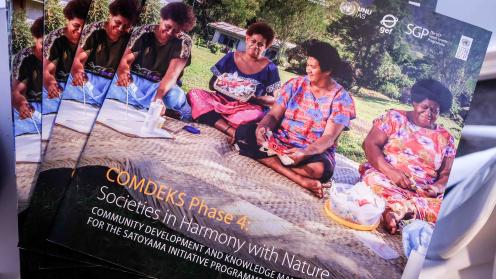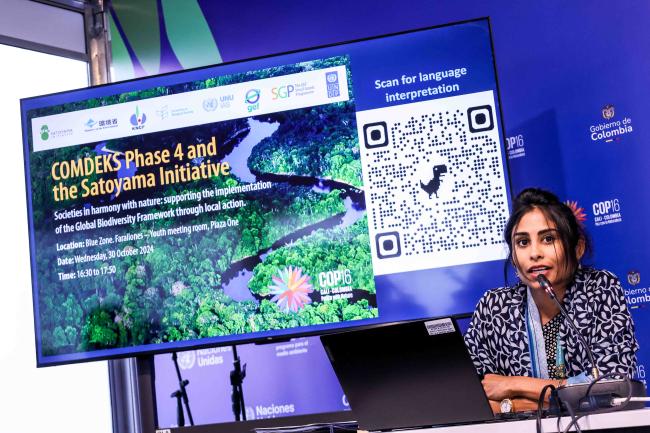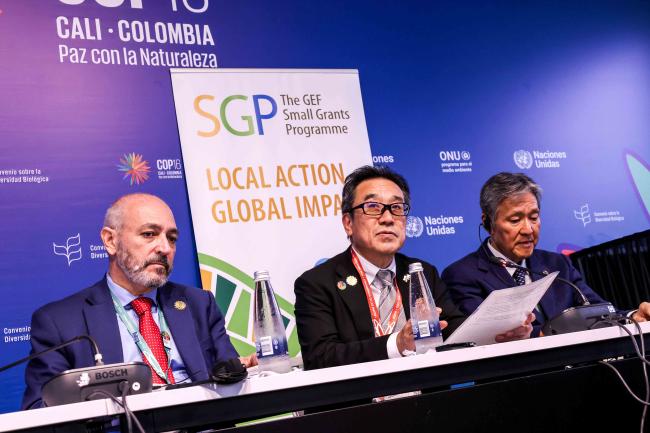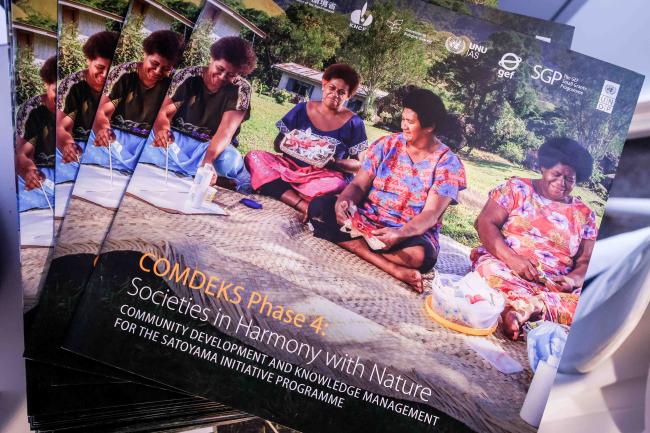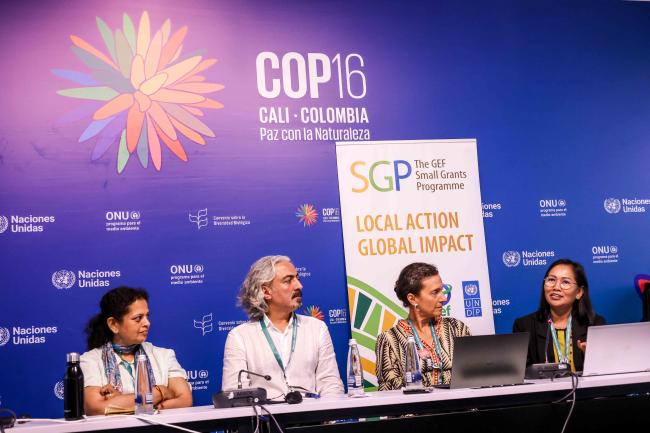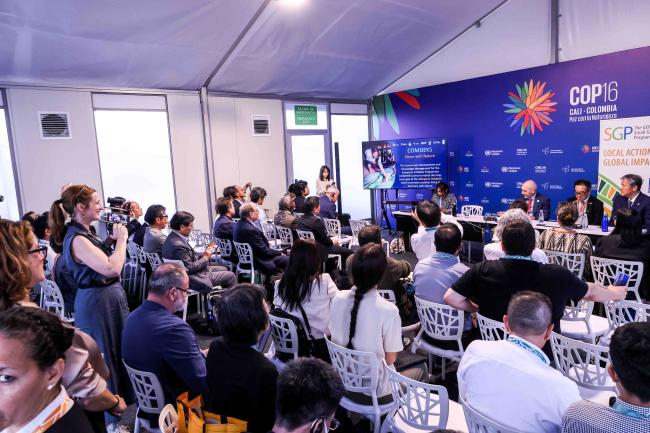About
The Community Development and Knowledge Management for the Satoyama Initiative (COMDEKS) is a flagship programme of the Satoyama Initiative, which supports conservation and sustainable management of socio-ecological production landscapes and seascapes. During this session, panelists shared examples of successful projects in Turkey, Cambodia, and Colombia. Rissa Edoo, UN Development Programme (UNDP), moderated the event.
In opening remarks, Marcos Neto, UNDP, reminded attendees that nature is humanity’s most powerful asset, and we should restore our relationship with it. He said the ambitious targets in the Kunming-Montreal Global Biodiversity Framework (GBF) cannot be achieved without socially-inclusive efforts and lauded the Satoyama Initiative for exemplifying this.
Yutaka Matsuzawa, Ministry of the Environment, Japan (MOEJ), said that COMDEKS will play a significant role in the implementation of the GBF.
Echoing this sentiment, Keiji Nishizawa, Chair, Keidanren Nature Conservation Council (KNCC), stated that COMDEKS is one of the best approaches for realizing the goal of living in harmony with nature. He said that greater impact can be achieved through collaboration among various sectors.
During the event, several videos showcased the positive impacts of COMDEKS projects for communities that were involved. Edoo also announced the recent publication of the brochure on COMDEKS Phase 4: Societies in Harmony with Nature. She outlined the four thematic areas: landscape/seascape diversity, ecosystem integrity and resilience; livelihoods and well-being; biodiversity and sustainable management (agriculture and fisheries); and governance and social equity.
Suneetha Subramanian, United Nations University for the Advanced Study of Sustainability (UNU-IAS), described the Resilience Indicator Toolkit, which was updated to reflect GBF priorities. The toolkit guides the community through a mapping exercise that assesses the condition of the ecosystem and biophysical and social elements, then examines relevant internal and external drivers and the interactions. The next steps, she explained, include analysis and goal setting and planning. She emphasized the toolkit’s flexibility, saying it is community based and highly linked to diverse cultural elements within the project area.
Engin Yilmaz, Yolda Initiative and the Alliance for Mediterranean Nature and Culture (AMNC), described the COMDEKS approach in Turkey in a wetland coastal area that is rich in biodiversity, agriculture, and culture. He noted that the steps involved mapping, a literature search, fieldwork, and a two-day multi-stakeholder workshop for knowledge exchange and reflections. He highlighted the use of indicators, including a comparison to conditions in the 1990s, to understand the drivers of change, and digitizing the results for monitoring and future decision-making.
Nagin Navirak, SGP, Cambodia, shared examples of practical implementation of the Satoyama Initaitive in her country, specifically the targeted Stung Siem Reap Watershed Landscape chosen in consultation with local communities. She said some projects have multiple elements within the identified landscape, such as rice planning, community savings groups, and climate-smart agriculture. She highlighted that biodiversity conservation and livelihood improvement go hand in hand, and engaging stakeholders is central to this concept.
Ana Beatriz Barona, SGP, Colombia, spoke about the Páramos in the Andes, the uniqueness of this ecosystem, and its importance to the country, noting it provides water to one-third of the population. She highlighted the role of rural women as guardians of the Páramos, and efforts focused on women’s empowerment, including a school for women’s leadership, and more women-led organizations. She underscored the value of community-based organizations formulating and implementing landscape projects that take into account specific ecological and socio-economic situations.
In closing, Fumiko Nakao, CBD Secretariat, emphasized that concrete activities are essential for implementation of the GBF. She lauded COMDEKS for its whole-of-government, whole-of-society approach and its landscape approach for addressing different priorities on how to use land and coastal areas, saying it truly embodies the approach of society in harmony with nature.
In the question-and-answer portion, attendees asked about the difficulties in implementing a landscape approach and finding concrete solutions to these challenges. Yilmaz noted that threats and challenges beyond the capacity of local communities can lead to abandoning the landscape or practice. Barona said their efforts to help should focus on supporting and catalyzing the people who are finding local solutions.
Organizers: Keidanren Committee on Nature Conservation, Ministry of the Environment of Japan, UNDP, GEF-SGP, CBD, UNU-IAS
Contacts: Rissa Edoo, UNDP, rissa.edoo@undp.org
For more information: https://www.cbd.int/side-events/5856
To receive free coverage of global environmental events delivered to your inbox, subscribe to the ENB Update newsletter.
All ENB photos are free to use with attribution. For the 2024 UN Biodiversity Conference, please use: Photo by IISD/ENB | Mika Schroder
